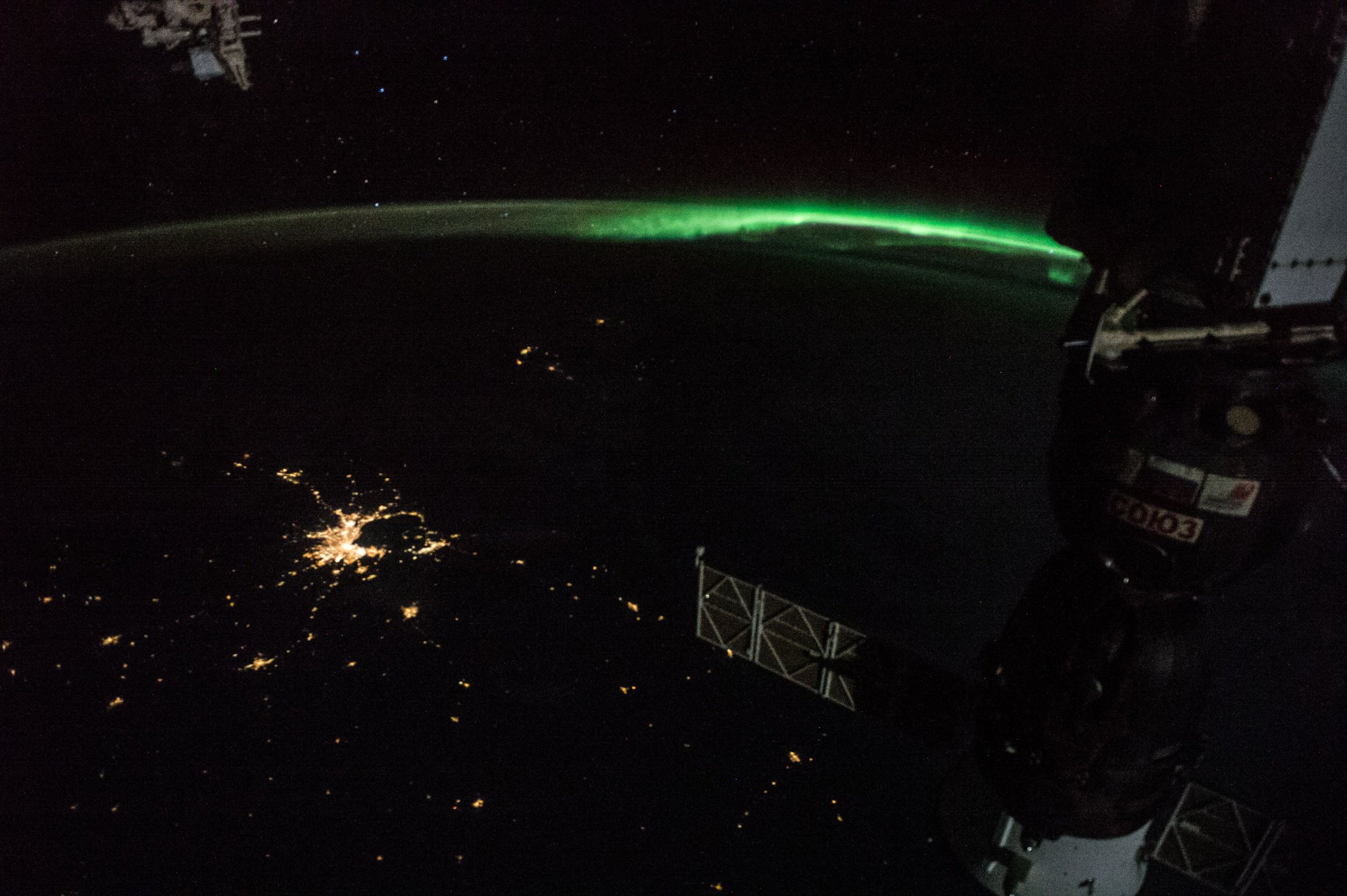[:ja]トマ・ペスケ宇宙飛行士がISSから撮影したオーストラリアのメルボルンとオーロラです。

オーロラは北極圏のイメージがありますが、地球の極に発する100km以上の上空で起こる放電現象なので、南極でも当然起こります。北米やスカンジナビアではオーロラのことを「北の光(northern lights)」と呼びますが、南極光を「南の光(southern lights)」、「南のオーロラ(Aurora Australis)」と呼びます。
宇宙から見た南極付近のオーロラ・オーバル(背景の地球は合成)はこちらです。

また、地上の南のオーロラの様子はこちらです。

参考文献: Thomas Pesquet’s Tweet
ウェブ地球儀で地球俯瞰画像を見る: LiVEARTH
[Earthview Wonders] No.266: Aurora Australis🇦🇺
Astronaut Thomas Pesquet captured from ISS the aurora and Melbourne, Australia.

Aurora is usually associated with Arctic region, but it is a discharging phenomenon that takes place at the polar region at over 100km above the ground. Auroras are called the “northern lights” in North America and Scandinavia, and “southern lights” or “Aurora Australis” in the southern hemisphere.
Aurora Australis from space is as follows (NASA’s image overlaid onto The Blue Marble composite image).

Actual Aurora Australis is as follows.

Reference: Thomas Pesquet’s Tweet
See earthview photo gallery with web-globe: LiVEARTH[:en][Earthview Wonders] No.266: Aurora Australis🇦🇺
Astronaut Thomas Pesquet captured from ISS the aurora and Melbourne, Australia.

Aurora is usually associated with Arctic region, but it is a discharging phenomenon that takes place at the polar region at over 100km above the ground. Auroras are called the “northern lights” in North America and Scandinavia, and “southern lights” or “Aurora Australis” in the southern hemisphere.
Aurora Australis from space is as follows (NASA’s image overlaid onto The Blue Marble composite image).

Actual Aurora Australis is as follows.

Reference: Thomas Pesquet’s Tweet
See earthview photo gallery with web-globe: LiVEARTH[:]